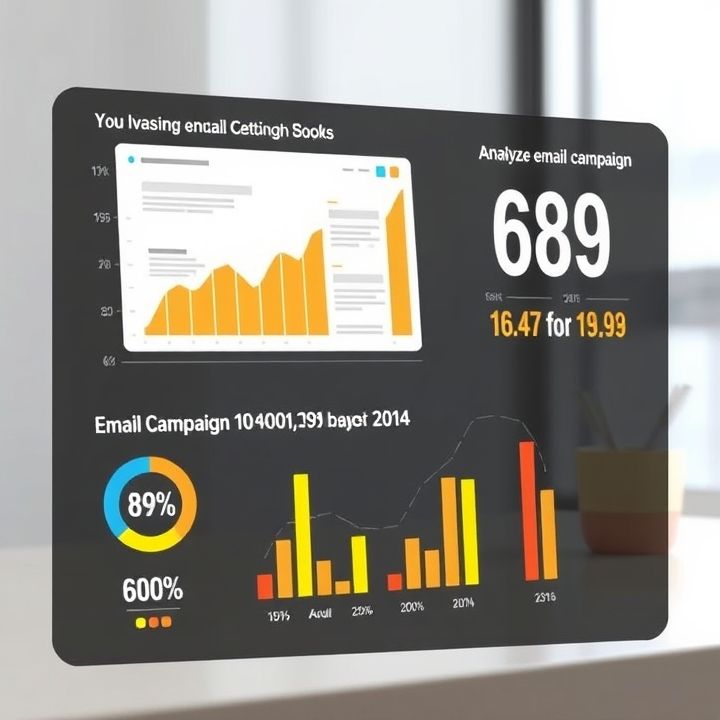Table of Contents
- Introduction
- Understanding the Role of AI in Content Creation and Detection
- How AI Writing Tools Revolutionize Content Creation on Platforms like WordPress
- Turnitin’s Capabilities in Identifying AI-Generated Content
- Comparing AI-Generated Content with Human Writing: Turnitin’s Challenges
- Best Practices for Educators in Dealing with AI-Powered Content Creation
- The Pros and Cons of AI Writing in an Academic Setting
- Leveraging AI Writing Tools for Automated Workflows and Content Optimization
- Exploring Future Trends: AI-Powered Tools, Content Automation, and Their Impact
- Conclusion
- Frequently Asked Questions
Introduction
The digital age has brought myriad advancements to the world of education, none as transformative and controversial as Artificial Intelligence. As AI-generated content becomes increasingly prevalent, educators and software companies grapple with the challenge of identifying and managing new forms of intellectual property.
Enter Turnitin, the long-standing guardian of academic integrity, with its latest mission: Can it detect writing crafted not by humans, but by the unseen algorithms of artificial intelligence? This question is catapulting plagiarism detection into uncharted territories.
In this article, we delve into the cutting-edge technologies that seek to analyze and discern the origins of text, while examining the implications for educators, students, and the future of academic honesty.

Understanding the Role of AI in Content Creation and Detection
AI, the magical maestro of our modern age, is strumming the strings of content creation and detection in ways we never imagined. Picture this: a digital quill that never tires, spinning tales and crafting essays with the swiftness of a falcon. It’s like having a writer’s room in a tiny chip, making it both miraculous and mysterious. But with great power comes great scrutiny. Enter Turnitin, the vigilant guardian of originality, perched high in the academic world. Though AI wears many hats—some of which it borrowed from human creativity—Turnitin’s on the lookout for those telltale fingerprints left by machine-made masterpieces.
Just as a seasoned detective can spot a forgery with a keen eye, Turnitin’s algorithms listen for the whispers of AI’s little helpers, those repetitive phrases that sometimes lack the soul of a human touch. Imagine a mischievous gremlin in the works, leaving trails of obviousness. Ah, but isn’t it ironic? The very tech that births brilliance also helps catch it when it strays too far from authenticity. For those weaving words, it’s a dance between inspiration and imitation, a delicate waltz watched over by an ever-watchful eye.
How AI Writing Tools Revolutionize Content Creation on Platforms like WordPress
Imagine you’re about to whip up a blog post, but the words just won’t come. Enter AI writing tools, your trusty sidekicks. They’re the wind beneath your creative wings, especially on platforms like WordPress. Gone are the days of staring at the blinking cursor, waiting for inspiration to strike. These tools scribble away tirelessly, crafting content that speaks volumes.
With just a sprinkle of keywords and a dash of direction, AI tools weave stories as expertly as a spider spins its web. Picture turning straw into gold—yes, it’s almost that magical! You might find a touch of irony in how machines now wield the pen, once the symbol of human thought. But hey, who knew progress could be so poetic?
From churning out catchy headlines to breathing life into mundane topics, these tools are content-creating maestros. But, they’re not just fast; they’re smart, catching the nuances and swooshing through edits with ease. It’s like having a literate genie granting your writing wishes. Though there’s no fairytale ending just yet, AI writing tools are certainly scripting the future of content creation—one post at a time.
Turnitin’s Capabilities in Identifying AI-Generated Content
Ah, the age-old question—or maybe not so old, considering AI’s just a sprout in the tech garden: Can Turnitin catch the sneaky nuances of AI writing? Well, let’s dive into it. Picture Turnitin as a wise old owl perched high above an academic forest, keeping a vigilant eye on every word and phrase fluttering about. Its keen sight has been honed over years to recognize patterns and give a wise hoot when something’s amiss.
Transitioning to its capabilities, Turnitin’s algorithms are designed to detect irregular flights of fancy—those odd turns of phrase that don’t quite fit the natural flow of human thought. In the grand symphony of words, an AI-written piece might be the odd note that doesn’t quite harmonize. However, Turnitin doesn’t just rely on pattern recognition; it also takes a stroll through its extensive database, looking for matches and anomalies.
Now, imagine for a moment a classroom scene: students, pencils poised, hearts racing. An AI could pen an essay in the blink of an eye, but Turnitin, with a detective’s flair, sifts through the narrative, sniffing out traces of its mechanical origin. While it’s not foolproof, it’s mighty close, turning ink on paper into yet another chapter in its ongoing tale of academic integrity.
Comparing AI-Generated Content with Human Writing: Turnitin’s Challenges
Imagine a world where words pour like honey from a jar, seamless and sweet. That’s often how AI-generated content flows. It’s a bit like magic, really. But here’s the kicker: AI can sometimes struggle with the subtle quirks of human prose. Humans write with soul, with a little heart tucked between the lines, and that’s where Turnitin steps in, scratching its head.
The tale of Turnitin is a curious one, folks. It’s an old dog learning new tricks, trying to catch those mechanical muses. AI can churn out essays faster than you can say ‘supercalifragilisticexpialidocious,’ yet it’s the authenticity and nuance that give human writing its edge. AI can mimic it, sure, but the fingerprints of creativity are often missing. Turnitin faces challenges, like a detective on a wild goose chase, as it sifts through algorithms, searching for that human touch in a sea of digital ink.
For Turnitin, it’s a puzzle wrapped in pixels. There’s a world of difference between human scribbles and AI sentences, and while both have their place, detecting the difference is like finding a needle in a binary haystack. But oh, what a journey it is to uncover the craft hidden beneath the code!
Best Practices for Educators in Dealing with AI-Powered Content Creation
In the realm of education, where knowledge is a treasure trove waiting to be unlocked, educators find themselves at a crossroads when it comes to AI-driven content. As technology tiptoes into the classroom, one might say it’s like a double-edged sword. On one hand, AI writing tools can be lifesavers for students struggling with their words, but on the flip side, they can easily become crutches. So, how do teachers tackle this modern-day conundrum?
First off, embracing AI, rather than resisting it, can be beneficial. For instance, think of AI as a teaching assistant who never sleeps. By introducing it in classrooms, educators can demonstrate its potential and pitfalls. This can serve as a wake-up call, a reminder for students to maintain originality while using technology responsibly.
Next, educators can weave in assignments that require personal reflections or anecdotes. It’s like leaving breadcrumbs for honesty and individuality. Analyzing students’ everyday experiences creates a tapestry of their unique voices, something AI can’t quite replicate.
Finally, clear guidelines and open discussions about academic integrity set the stage for meaningful conversations. By fostering an environment of trust—where creativity blooms like a spring garden—students learn to wield AI tools wisely, much like a skilled artist with a fresh canvas.
The Pros and Cons of AI Writing in an Academic Setting
In the bustling world of academia, AI writing tools have tiptoed in like curious cats, poking their digital noses into a once human-only territory. While these tools promise thunderous speed and efficiency, they bring baggage too – a mixed bag of blessings and botherations.
On the sunny side of the street, AI writing can help students overcome writer’s block, offering a gentle nudge to get the creative juices flowing. It’s like having a magic wand to whip up research summaries or bibliographies in the blink of an eye. For those late-night study marathons, AI can be the trusty sidekick, alleviating academic angst.
However, every silver lining has its cloud. There’s a catch! Relying too heavily on AI might just put originality and personal voice on the back burner. Imagine a world where essays read like they were churned out by robots; it’s a chilling thought. Moreover, when AI hits a road bump with nuanced topics or complex arguments, it can muddle the message, leaving students high and dry.
In essence, AI writing is like a two-sided coin. It can be a great asset or a slippery slope, urging students to tread carefully, blending technology with a dash of their own brilliance!
Leveraging AI Writing Tools for Automated Workflows and Content Optimization
Imagine AI writing tools as trusty companions in a bustling newsroom, helping writers weave their daily stories. Much like journeymen crafting tales from thin air, these tools offer a treasure trove of possibilities, transforming mundane writing into a streamlined masterpiece. But hang on—don’t think for a second that AI’s all work and no play. Oh no, these marvels help optimize content with a sprinkle of creativity and a dash of efficiency. Picture a chaotic orchestra of words suddenly harmonizing into a beautiful symphony.
When Joe, a busy content creator, first stumbled upon AI writing aids, it felt like he’d discovered a hidden garden full of ripe ideas, ready to harvest. These tools could organize his chaotic thoughts quicker than a hiccup, leaving him with more time to sip a morning coffee before diving into the day’s projects. Surely, AI writing tools unlock new paths for workflow automation, akin to a well-oiled machine running effortlessly. They never tire, unlike their human counterparts, plugging away night and day with unmatched vigor.
However, in this digital dance, it’s wise to remember that AI might set the stage, but the human touch—a final flourish—makes content truly sing. Without it, the writing might end up as hollow as a drum.
Exploring Future Trends: AI-Powered Tools, Content Automation, and Their Impact
Imagine, for a moment, a world where machines weave the words of our lives, with AI taking the driver’s seat in content creation. Sounds like the plot of a sci-fi flick, right? Nope, it’s actually knocking at our doors! AI-powered tools are already reshaping how we churn out content, and boy, the domino effect is remarkable! Take content automation, for instance. It’s like having a tireless writer on a caffeine high, tapping away at the keyboard day and night without breaking a sweat. With a flicker of irony, we see that while machines mimic human-like creativity, there’s a twist in the tale – a relentless debate on originality and authenticity. Ah, the sweet scent of irony! Picture this: a storytelling bot crafting narratives peppered with emotion, alliteration, and glimmers of human touch. It’s not just about speed but transforming how we view creativity. Foreshadowing an era dominated by digital scribes, it raises questions about whether the pen is, indeed, mightier than the pixelated processor. AI tools might just redefine storytelling, pushing the boundaries between human imagination and machine precision, like an artist with a brush in one hand and a mouse in the other. Now, that’s something to chew on!
Conclusion
The world of content creation is undergoing a seismic shift, with AI at its helm. As AI rapidly evolves, tools like Turnitin are honing their capabilities to spot AI-generated work. While Turnitin is a critical player in maintaining academic integrity, the future beckons those who integrate AI into their workflows. As AI reshapes the writing landscape, leveraging advanced platforms like WPHorde is crucial. Those who adopt these technologies will excel, while others risk being left behind in the whirlwind of digital transformation. Embrace the change and harness AI’s power, positioning yourself at the forefront of innovation. Transform your content creation process today and ensure you stay ahead in this rapidly evolving era!














